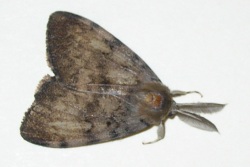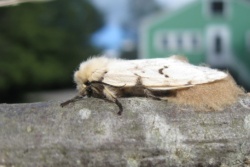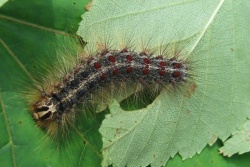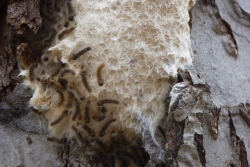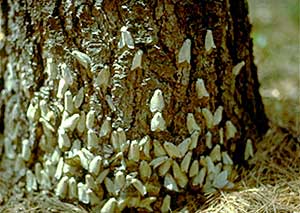Lymantria dispar - (Formerly called Gypsy Moth)
The Lymantria dispar is an invasive insect from Europe. Lymantria dispars generally feed in hardwood trees and cause severe defoliation that can lead to growth loss and dieback as well as make affected trees more susceptible to other stressors. Healthy hardwoods can survive several consecutive growing seasons of defoliation by Lymantria dispar before the pest causes significant impacts. Softwoods, which are defoliated after hardwoods have been stripped, can succumb to Lymantria dispar feeding in a single season.
Lymantria dispar larvae disperse by ballooning—they hang from a silk thread and can be carried by the wind up to a mile away. The larvae and egg masses can also be moved long distances on cars, recreational vehicles and equipment, firewood and personal belongings.
All of Maine is under quarantine for this pest. Find more info at USDA-APHIS.
In Maine, please report sightings of large numbers of this pest to the Maine Forest Service.
Click on images to view full-size
Identification and Control Information
- Lymantria dispar (PDF)—Maine Forest Service
- Lymantria dispar Fact Sheet—UMassAmherst
- Lymantria dispar—USDA Forest Service
More Information
- Lymantria dispar Quarantine—USDA-APHIS
- Maine Forest Service: Conditions Reports (updated regularly) including annual summary reports
[Photos: Maine Forest Service, except last photo which is from Tawny Simisky, UMass Amherst]
